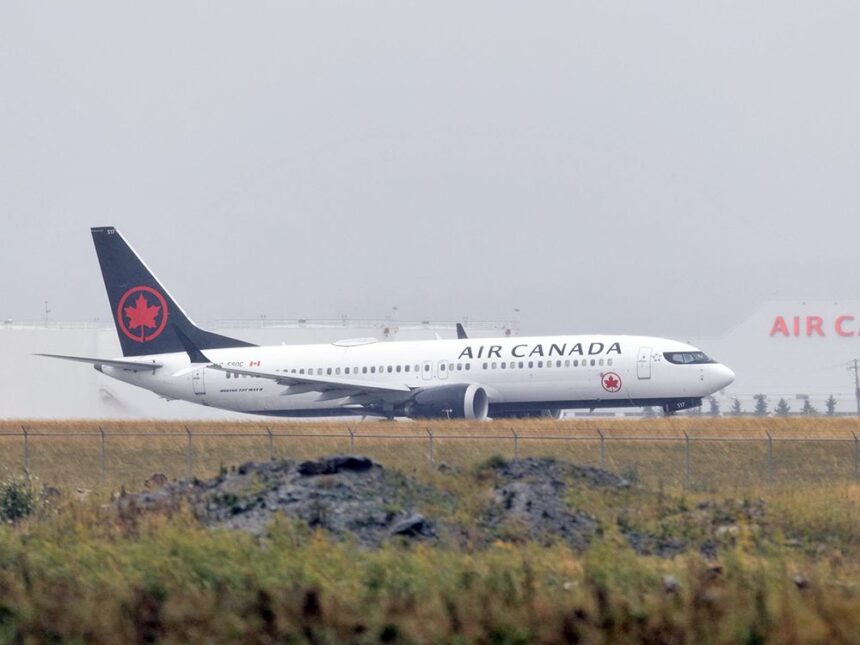Article – As the summer travel season ramps up, a cloud of uncertainty hangs over Air Canada’s operations. The airline’s 8,500 flight attendants have voted overwhelmingly in favor of strike action if ongoing contract negotiations fail to produce satisfactory results. With 99.2% of members backing potential job action, the Canadian Union of Public Employees (CUPE) has positioned itself for what could become a major disruption in Canada’s aviation sector.
I spent yesterday afternoon speaking with travelers at Ottawa International Airport, where anxiety was already evident. “We’ve been planning this family reunion in Vancouver for over a year,” said Melissa Chen, clutching her boarding pass. “Now I’m wondering if we should book backup flights with another airline just in case.”
This potential work stoppage comes at a particularly sensitive time. Air Canada has been rebuilding its post-pandemic reputation while dealing with growing passenger expectations and regulatory pressures. According to Transport Canada data, the airline carried approximately 32 million passengers in 2023, approaching pre-pandemic levels for the first time.
The core issues driving this labor dispute reflect broader tensions in Canada’s recovering travel industry. Flight attendants are seeking improved wages, better scheduling practices, and increased job security protections. Wesley Lesosky, president of the Air Canada component of CUPE, emphasized that compensation hasn’t kept pace with inflation or industry standards.
“Our members have made significant sacrifices to help the company through difficult times,” Lesosky stated during a press conference in Toronto. “Now that Air Canada has returned to profitability, it’s time for flight attendants to share in that recovery.”
Air Canada reported an operating income of $2.3 billion in 2023, marking a substantial turnaround from pandemic-era losses. This financial recovery has strengthened the union’s position that workers deserve improved compensation packages.
The timeline for potential disruption is approaching rapidly. The union will be in a legal strike position by June 26, right as schools let out and the summer travel season kicks into high gear. This timing gives both sides approximately three weeks to reach an agreement before service interruptions become possible.
For worried travelers, the immediate concern is straightforward: what happens to their travel plans? Air Canada has issued a statement indicating they remain “committed to reaching a fair agreement” and that “all flights are operating as scheduled.” However, they’ve stopped short of outlining specific contingency plans.
Transport Minister Pablo Rodriguez has urged both sides to continue negotiations, noting the federal government is “monitoring the situation closely.” While the government retains the power to intervene in labor disputes affecting essential services, it has traditionally been reluctant to interfere in airline labor negotiations.
Industry analysts suggest the strike vote itself may be primarily a negotiating tactic. “The overwhelming support gives the union significant leverage at the bargaining table,” explained Dr. Anita Singh, labor relations expert at York University. “Neither side truly wants a work stoppage, but this demonstrates the seriousness of flight attendants’ concerns.”
What makes this potential strike particularly impactful is the limited alternatives available to travelers. WestJet, Canada’s second-largest carrier, experienced its own operational challenges earlier this year. Smaller carriers like Porter and Flair lack the capacity to absorb significant numbers of displaced Air Canada passengers.
International travelers face added complications. Air Canada serves over 180 destinations worldwide, and many routes have limited or no competition. This means travelers to certain destinations could find themselves with few alternatives if strikes proceed.
For consumers holding Air Canada tickets for summer travel, travel insurance becomes a critical consideration. However, standard policies typically exclude coverage for strikes announced before policy purchase. “Once a strike vote has been publicized, new insurance policies generally won’t cover related cancellations,” cautioned Marvin Ryder, business professor at McMaster University.
The flight attendants’ concerns extend beyond wages. Scheduling practices, particularly regarding rest periods between flights, have become increasingly contentious. Flight attendant Samantha Wright, who requested her real name not be used, told me about working back-to-back transatlantic flights with minimal recovery time. “The fatigue isn’t just about our wellbeing—it’s a safety issue for everyone onboard,” she explained.
Air Canada’s last major labor disruption occurred in 2011, when a three-day strike by customer service agents was ended by federal back-to-work legislation. That dispute ultimately led to binding arbitration. Whether the current situation will follow a similar path remains to be seen.
As negotiations continue behind closed doors, travelers are left wondering about their summer plans. Travel agencies report an uptick in calls from concerned customers, though cancellations remain minimal so far.
The outcome of this labor dispute will likely have ripple effects throughout Canada’s aviation industry. As the country’s flag carrier and largest airline, Air Canada’s labor relations often set precedents for the sector. Other aviation workers are watching closely, with pilots at several Canadian airlines currently in various stages of their own contract negotiations.
For now, both the airline and union representatives continue to express optimism about reaching an agreement. Whether that happens before summer vacations are disrupted will depend on the progress made in the coming days and weeks. For anxious travelers like Melissa Chen at Ottawa International, the wait continues.






